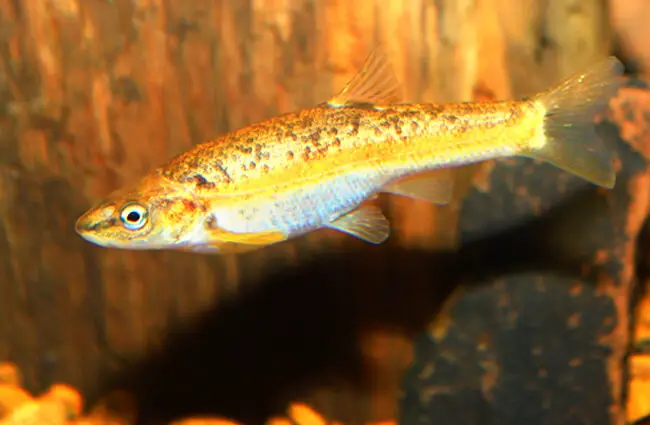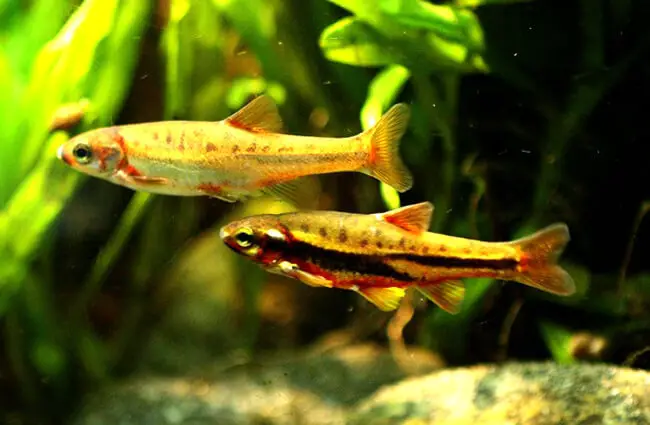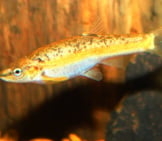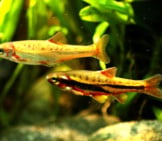The Dace is a large minnow. People refer to a number of different species by this name, mostly those of the carp and minnow family Cyprinidae. The most common and well-known species by this name is Leuciscus leuciscus, or the common Dace. For this reason, we will focus primarily on that species. Read on to learn about the Dace.
Description of the Dace
These fish look like a larger version of your typical minnow. Their bodies have an elongated, torpedo-shape to them, which tapers off at the tail. They have silver colored scales, with darker coloration along the tops of their backs. The largest individuals reach about a foot long and weigh up to two pounds.
Interesting Facts About the Dace
This species of bait fish has several interesting traits and characteristics that make it unique. Learn more, below.
- In the Family – Researchers place this species in the Cyprinidae family, which contains the carps and the minnows. Some other members of the family include breams, danios, goldfish, koi, and more.
- Long Lived – For such a seemingly unremarkable fish, this species lives up to 16 years!
- Best Bait – Though some people do eat this fish, they more commonly use the fish as bait. This species is a favorite among anglers for catching Northern pike.
- Prolific Breeders – This fish doesn’t breed until it reaches about three years of age, and often only breeds once or twice in its life. Despite this, the species is quite prolific. They reproduce at high volumes and have strong populations.
Habitat of the Dace
You can find this species in freshwater habitats. Throughout their range, most live in relatively cool waters. They prefer regions with moving water and little suspended sediment. Their favorite habitats include streams, rivers, and creeks with deep waters and gravel or rock bottoms.
Distribution of the Dace
This fish lives in freshwater habitats throughout much of Europe. Their range extends from France up to Sweden and Finland. It also extends east to the Ural Mountains, down to western Kazakhstan. You can also find them in the United Kingdom and southern Ireland.
Diet of the Dace
Fish in different stages of life feed on different prey. As larvae, they hunt for tiny microorganisms along the shore and away from the current.
Juveniles begin feeding farther from shore, and also prey on small invertebrates. Adults feed in fast flowing waters and search for worms, snails, insects, and small crustaceans. They also eat algae and submerged vegetation on occasion.
Dace and Human Interaction
Though people do fish for this species, most people do not eat them. However, people often use them as bait fish, particularly for catching pike. Despite their use as bait fish, this species has high population numbers and reproduces prolifically. The IUCN lists this species as Least Concern.
Domestication
Humans have not domesticated this species in any way.
Does the Dace Make a Good Pet
No, this fish does not generally make a good pet. Honestly, there isn’t really anything to attract people to keep this fish as a pet in the first place. Some people do keep them for short periods to use as bait at a later time.
Dace Care
Generally, people do not keep this fish in aquariums. They do not have any outlandish care requirements. You just need to house them in conditions similar to those in their natural habitats. Their diet consists of invertebrates, and they eat a variety of worms or commercially produced fish food.
Behavior of the Dace
Like other minnows, this fish is gregarious, or social. They live in groups known as schools. The schools actively move through flowing water in search of prey. During the summer they spend more time near the surface of the water. In the wintertime they remain in deeper areas of slower moving water.
Reproduction of the Dace
Like other members of Cyprinidae, these fish breed by spawning. During spawning, males and females release their sperm and eggs, and fertilization occurs outside of the body. Spawning occurs during March and April.
When breeding season arrives, males establish small territories to attract females. The females choose the males with the most desirable territories. Males build shallow depressions in the gravel, and the females lay their eggs inside.









![Red Angus Closeup of a beautiful Red Angus cowPhoto by: U.S. Department of Agriculture [pubic domain]https://creativecommons.org/licenses/by/2.0/](https://animals.net/wp-content/uploads/2020/03/Red-Angus-4-238x178.jpg)












![Red Angus Closeup of a beautiful Red Angus cowPhoto by: U.S. Department of Agriculture [pubic domain]https://creativecommons.org/licenses/by/2.0/](https://animals.net/wp-content/uploads/2020/03/Red-Angus-4-100x75.jpg)

